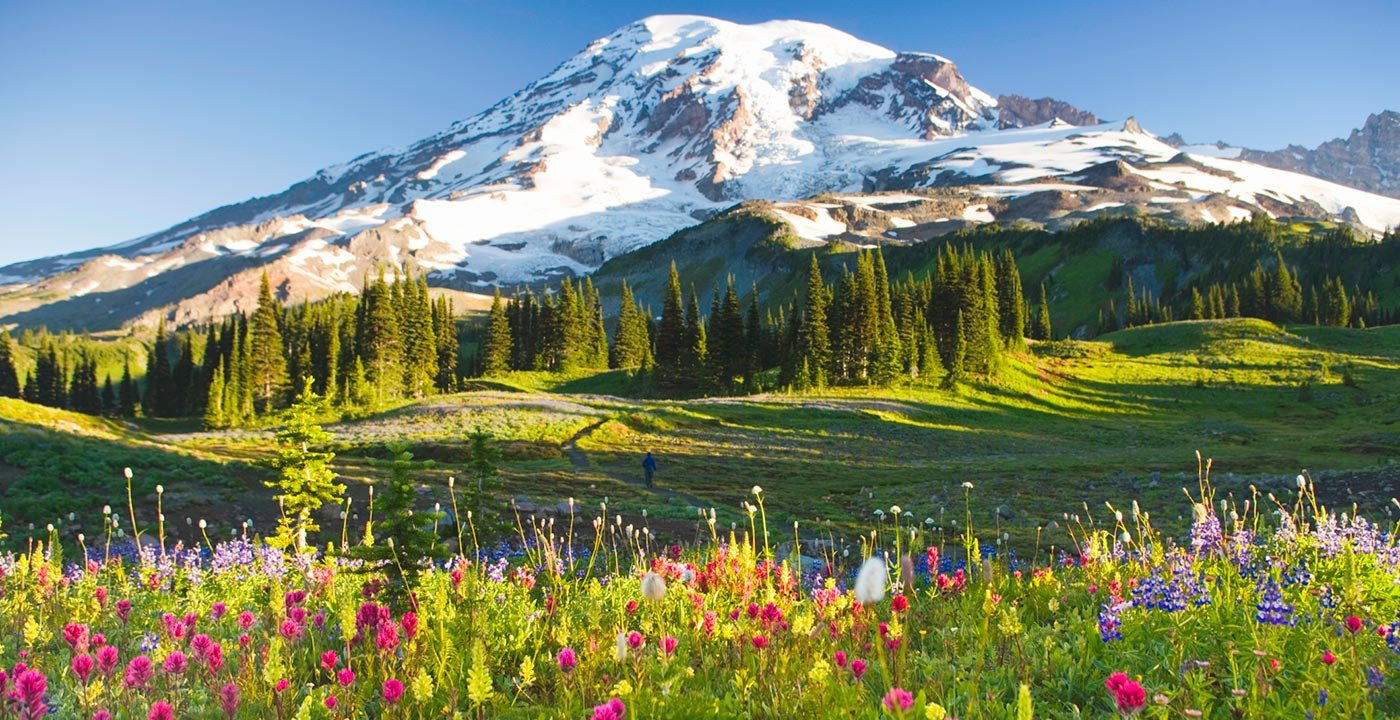I’m an outdoorsy kind of guy so when Andrew said we could blog about anything science related this idea popped into my head right away. I used to live in Washington state and I was lucky enough to hike Mt. Rainier. Being from the east coast I had never seen a mountain that went above the tree line, let alone one that is over 14,000 feet above sea level! Mt. Rainier is still considered an active volcano which got me thinking, how much destruction will it cause when it erupts?
Mt. Rainier is part of the Cascade mountain range that begins in northern California and ends in Canada. In the Cascades there are 18 volcano’s in the United States alone. Of those 18 Mt. Rainier is the only one considered a decade volcano. The title of a “decade volcano” is only given to volcano’s that have the capability of being very destructive. There are only 16 decade volcano’s in the world, and they are generally located near densely populated areas. What makes Mt. Rainier a decade volcano is its close proximity to the Puget Sound which is a very populated area. Mt. Rainier is also only 54 miles away from Seattle. There are roughly 3.7 million people living in or just outside of the city. The large amount of glacial ice on the mountain is another dangerous factor that makes it a decade volcano. When a volcano releases hot gasses or pyroclastic flows that mix with ice it forms what is called a “lahar.” A lahar is formed when ice and pyroclastic flows mix and flow down the side of a mountain. Lahars can be thought of as a giant blob that generally grow in size the further they travel, picking up anything in its way. The speed that a lahar will travel depends on how large it is, and the slope of the hill it travels down. There are roughly 80,000 people who live close enough to be affected by these dangerous flows. Lahars have been documented traveling up to 10 miles from Mount Rainier, posing no risk to anyone in Seattle.

Although lahars cannot travel far enough to reach Seattle, there is a chance volcanic ash could. In 1980 scientists calculated that when volcanic ash (tephra) from the Mt. St. Helens eruption traveled over 100,000ft up into the sky. Mt. Rainier would be able to produce the same if not more tephra. The largest threat tephra imposes is the potential to contaminate Seattle’s drinking water, and maybe cave in a few roofs. Mt Rainier has the potential to inflict some serious damage but Seattle may be just far enough from its reach.
First picture: http://cdn.aarp.net/content/dam/travel/destination-images/mount-rainier/2014-01/1400-mount-rainier-wa-flowers.imgcache.rev1409258920002.web.jpg
Second picture: https://www.pinterest.com/pin/269441990177933343/

Living on the east coast my whole life, I have not the satisfaction of being near as big mountain ranges as you. I always wish to have the chance to go out west and see the cascade range. After reading this it is good to know that if there was an eruption, the damage would be limited.